Car accidents in California can lead to more than just vehicle damage or personal injury; they can also significantly impact your insurance premiums. Understanding how these adjustments occur is essential for managing your finances effectively. At Law Offices of Delitala, Inc., we understand the complexities of the legal landscape and offer you the support needed to navigate these changes. We are committed to safeguarding your rights and ensuring that you are equipped to handle the implications of a post-accident scenario.
How Do Car Accidents Influence Insurance Premiums?
Following a car accident, one of the most immediate financial impacts you might face is an increase in insurance premiums. Insurance companies assess risk based on the details of the accident, considering factors such as who was at fault, the severity of the damage, and your driving history. This risk assessment often results in higher premiums to compensate for what insurers perceive as an increased likelihood of future claims.
Insurers delve into the specifics of each claim, evaluating components like the cost and extent of vehicle damage. Even if you're not at fault, certain claims can trigger a rise in your premiums. Comprehensive and collision coverages are especially susceptible to these changes. On the flip side, drivers with strong records of safe driving practices may experience less severe increases.
The timing of these adjustments isn't always immediate. Typically, insurers reassess premium rates upon policy renewal, which can provide some additional time to prepare your finances. Exploring strategies such as bundled policies or raising deductibles could alleviate some of these financial burdens, helping to mitigate the impact of increased premiums.
Are There Unique Insurance Regulations in California?
California’s regulatory framework significantly shapes how auto insurance works after an accident. Drivers must maintain minimum levels of coverage: $15,000 for injury or death of one person, $30,000 for injury or death to more than one person, and $5,000 for property damage. These regulations influence the outcome of claims and your subsequent premiums.
The state’s comparative fault rule allows liability to be distributed among parties based on their degree of responsibility for the accident. This rule can complicate premium adjustments because even a partial responsibility can result in changes to your rates. To navigate these waters effectively, having comprehensive documentation and representation is key.
Beyond these foundational rules, California’s Proposition 103 requires insurers to justify rate increases, serving as a consumer protection mechanism. This measure ensures you receive fair treatment and provides a platform for contesting unjustified hikes. Familiarizing yourself with these regulations can empower you to advocate effectively for your insurance needs.
Does Fault Alone Determine Premium Changes?
While fault significantly impacts insurance premiums, it is not the only factor at play. In California, the comparative fault system means even partially at-fault drivers could face premium hikes. However, there are instances where a no-fault scenario might still lead to increased rates, especially when there are multiple claims involved.
Aside from fault, frequent claims on various incidents, regardless of who is at fault, can cause insurers to reassess your risk level. Comprehensive claims related to non-driving-related accidents, such as theft or natural disasters, can also influence your premiums, though usually to a lesser extent than collision claims.
Understanding the multifaceted nature of how premiums are affected allows you to take more informed actions. Engaging in conversations with your insurer about forgiveness policies or exploring premium mitigation strategies can be beneficial. Proactively managing this aspect of your insurance policy may help to control costs in the long run.
What Are the Long-Term Impacts of Accidents on Insurance Costs?
The ramifications of a car accident on your insurance premiums can linger long after the accident, often for three to five years. This period can vary, influenced by the severity of the accident and specific policies of the insurance provider. Anticipating this timeline is vital for financial planning.
During each policy renewal cycle within this timeframe, insurers reassess your risk profile, often adjusting premiums accordingly. Even a single incident can become a point of reference affecting your ongoing insurance evaluations. The extent of these changes may differ depending on the nature of the incident and your driving record.
To manage long-term insurance costs effectively, concentrate on maintaining a clean driving record post-accident. Engaging in safe driving practices and avoiding additional claims are key strategies. Such initiatives can demonstrate responsible behavior to insurers, potentially mitigating the extended effects on your premiums.
What Steps Can You Take to Minimize Insurance Increases?
There are several proactive measures you can adopt to mitigate potential insurance premium increases after an accident. First, consider negotiating with your insurer about existing policies that may prevent hikes, such as accident forgiveness programs. These programs might offer protection against rate increases following an initial minor incident.
Explore potential discounts by reviewing your policy comprehensively. Bundling auto insurance with other insurance types can often yield multi-policy discounts. Furthermore, good credit scores, when relevant, and opting for annual over monthly premium payments might also influence costs favorably. Consider adjusting your deductible to a higher amount as another option for immediate premium reductions.
Regular insurance policy reviews and comparisons can also help you navigate a complex market. Update your policy to reflect current needs and circumstances, and don’t hesitate to switch to more competitive insurers if necessary. Addressing these factors proactively can help maintain manageable premium levels.
What Questions Should You Ask Your Insurer After an Accident?
After an accident, it’s crucial to communicate effectively with your insurer to understand how your premiums might be affected and what steps you can take. Begin by inquiring, “How will this accident impact my premiums at the next renewal?” This question can help you prepare for potential changes in advance.
Next, ask whether you are eligible for accident forgiveness or other available discounts that can offset premium increases. Questions like, “What proactive measures can I take to lessen premium impacts?” may uncover opportunities to implement cost-saving actions, such as safe driving incentives.
Ensure clarity on the breadth of your coverage moving forward. Discuss what your policy covers after the accident and any notable exclusions to avoid unpleasant surprises in the future. Engaging in this dialogue equips you with knowledge essential for making informed insurance decisions.
How to Navigate California's High-Cost Insurance Market
The high costs associated with California's insurance market require proactive measures to manage your premiums effectively. Regularly reviewing and comparing quotes from different providers is a foundational step in finding the best possible rates for your situation.
Consider exploring alternatives such as usage-based insurance policies, which calculate premiums based on your actual driving habits. These policies use telematics data to assess risk, offering potential savings for safe drivers. Additionally, opting for higher deductibles can often lead to lower premiums, especially if your driving record supports fewer frequent claims.
Participating in defensive driving courses and demonstrating a commitment to safer driving methods can also reduce premium costs. These practices contribute to securing lower rates and ensure sustainable management of vehicle insurance expenses over time.
Top Resources for Understanding California Insurance
Having access to the right resources is essential for managing your car insurance post-accident. The California Department of Insurance (CDI) provides invaluable insights into consumer rights and the obligations of insurance companies, serving as a reliable source for navigating California’s insurance systems.
Third-party platforms offer innovative tools for comparing insurance quotes and evaluating various policy options based on your risk profile and preferences. Utilizing these platforms can enhance your decision-making process, promoting an informed approach to insurance management.
Consulting with legal professionals, like Law Offices of Delitala, Inc., ensures that you navigate the insurance landscape with confidence. Equipped with an understanding of consumer rights and legal recourses, professional support aids in reinforcing your insurance management strategy, ensuring peace of mind as you face the complexities of post-accident scenarios.

